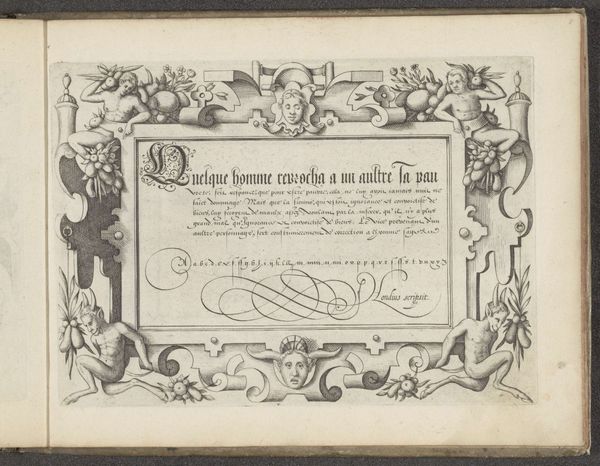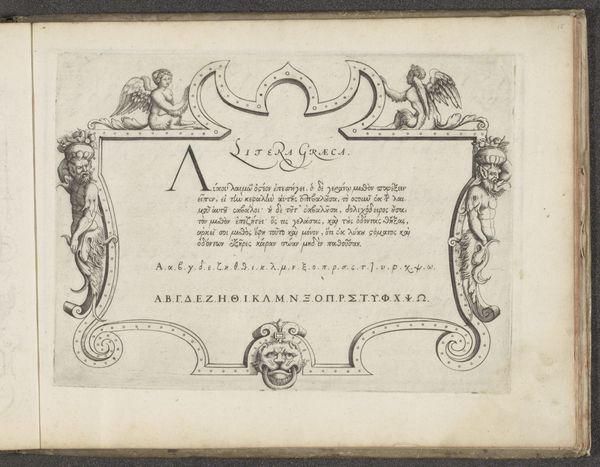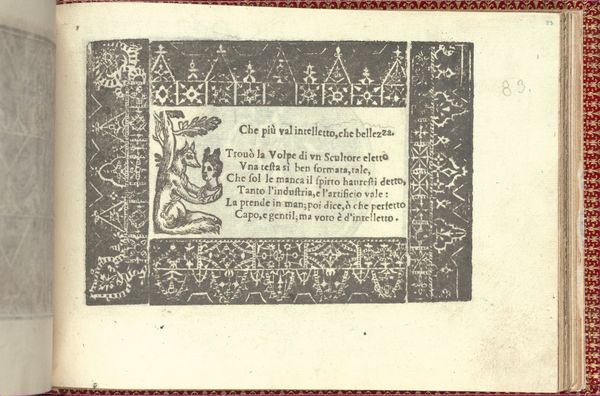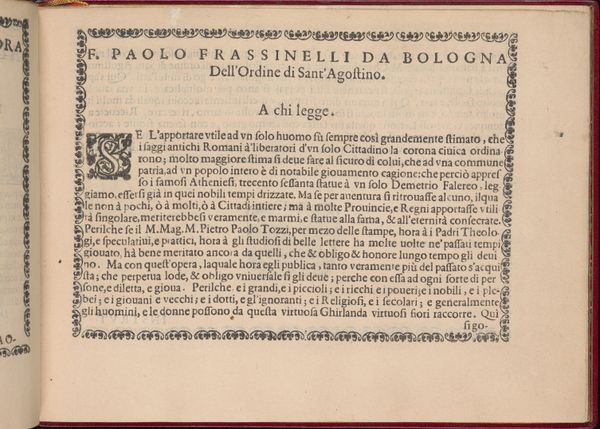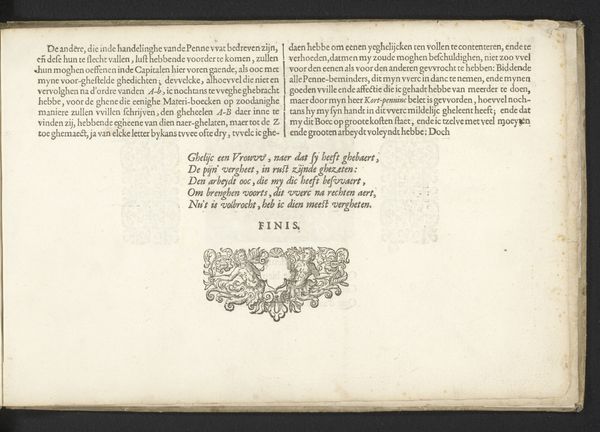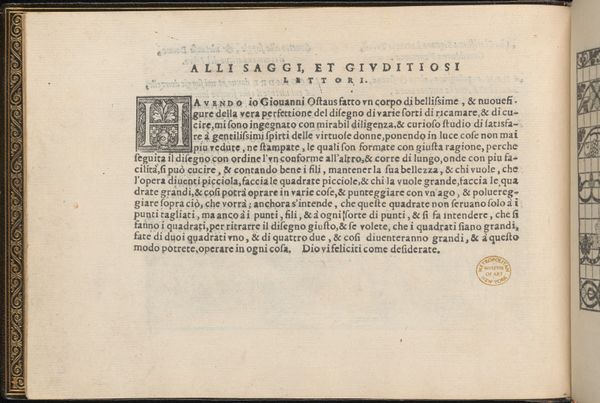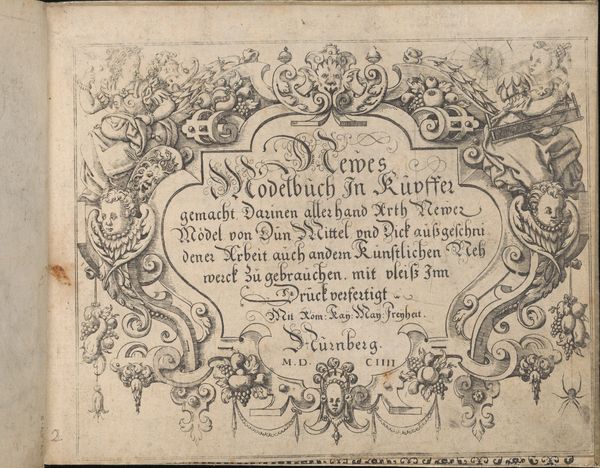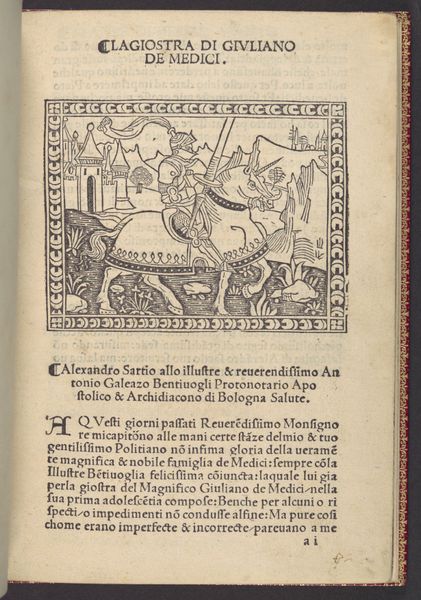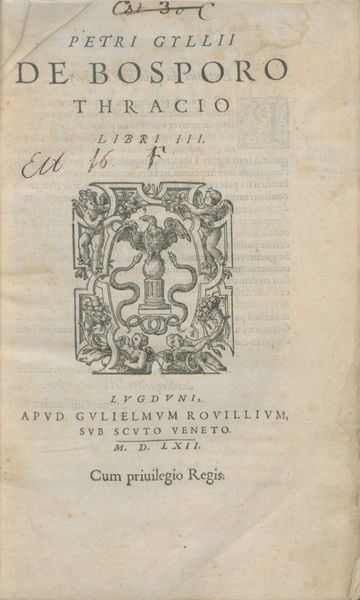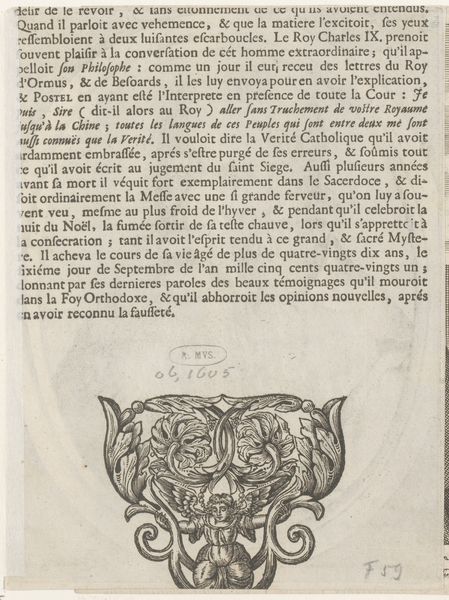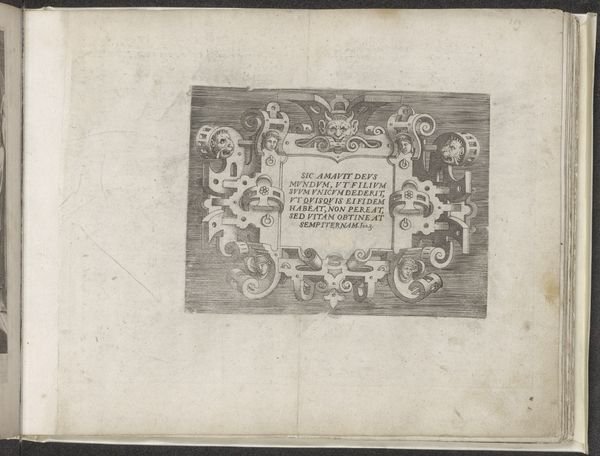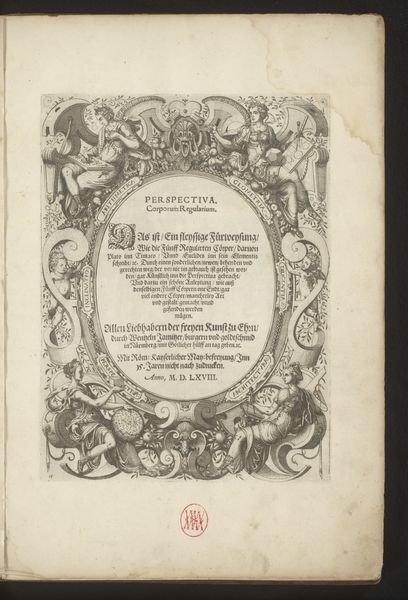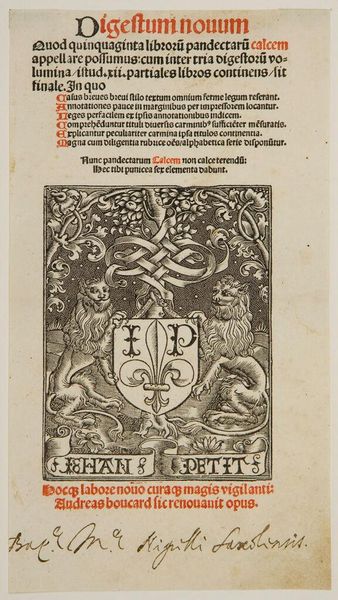
Corona delle Nobile et Virtuose Donne, Libro Terzo, page 28 (recto) 1620
0:00
0:00
drawing, print, paper, ink, woodcut
#
drawing
#
narrative-art
#
ink paper printed
# print
#
book
#
figuration
#
paper
#
11_renaissance
#
ink
#
woodcut
#
italian-renaissance
Dimensions: Overall: 5 1/2 x 7 11/16 in. (14 x 19.5 cm)
Copyright: Public Domain
Curator: This is a page from Cesare Vecellio's *Corona delle Nobile et Virtuose Donne, Libro Terzo,* created around 1620. It’s a woodcut printed in ink on paper. Editor: It's striking. The black ink is so dense, creating this bold contrast against the paper. The image and text, framed by such intricate border designs... there’s almost a heavy, handcrafted feel to the piece. Curator: The book itself was designed as a survey of women's costumes and fashions, with each page presenting a different female figure or allegorical scene. Vecellio aimed to document the visual culture and social identities of women during the Renaissance. Here, a fox holds a human head. Editor: I'm immediately drawn to the central motif, a fox reverently presenting a detached head. There's such a strange juxtaposition here, a sort of crude scene combined with the delicacy of the linework. Given that the Italian text suggests a preference of intellect to beauty, could the fox be scrutinizing the head and looking at beauty? It reads a bit satirically in the sense of commentary on artistic skill and taste during the Renaissance. Curator: Precisely. This piece exemplifies how printed images disseminated ideas about gender and social roles. Books were luxury commodities produced through significant labor: paper production, inking the blocks, operating the printing press. Looking closely at these production methods reveals the economies of art and culture during this period. It's incredible that through the print, a complex set of social commentaries could then be cheaply spread. Editor: Agreed. Beyond the craftsmanship, one has to appreciate how print became integral to Renaissance society as it shaped the way visual culture was understood and received. The framing around the scene contributes to an ambiance of elegance, adding complexity to an image that might otherwise seem simpler in intention. I suppose the intention was to produce intellectual engagement? Curator: Yes, quite possible! Vecellio probably meant this print to circulate beyond the elite and promote new approaches to education through these accessible books. This particular page truly underscores how fashion wasn't just about clothing, but how people, both then and now, understood their social position and culture at large. Editor: Well, this glimpse into material culture and book production definitely challenges our modern expectations. There's a real power in appreciating this intersection between artistry and material means, not just the final printed image, of course.
Comments
No comments
Be the first to comment and join the conversation on the ultimate creative platform.
